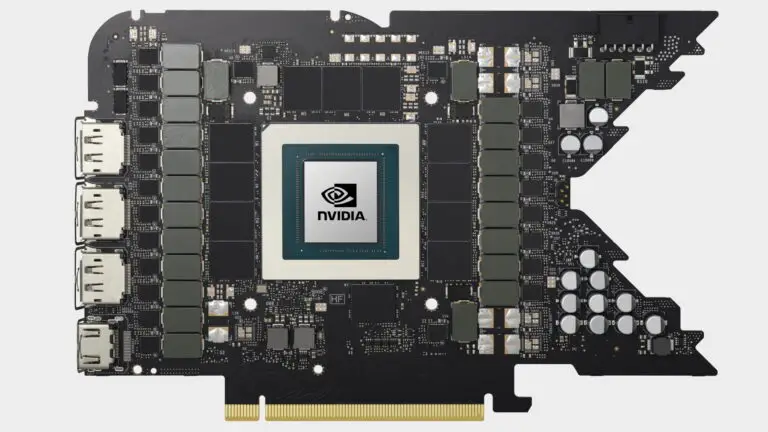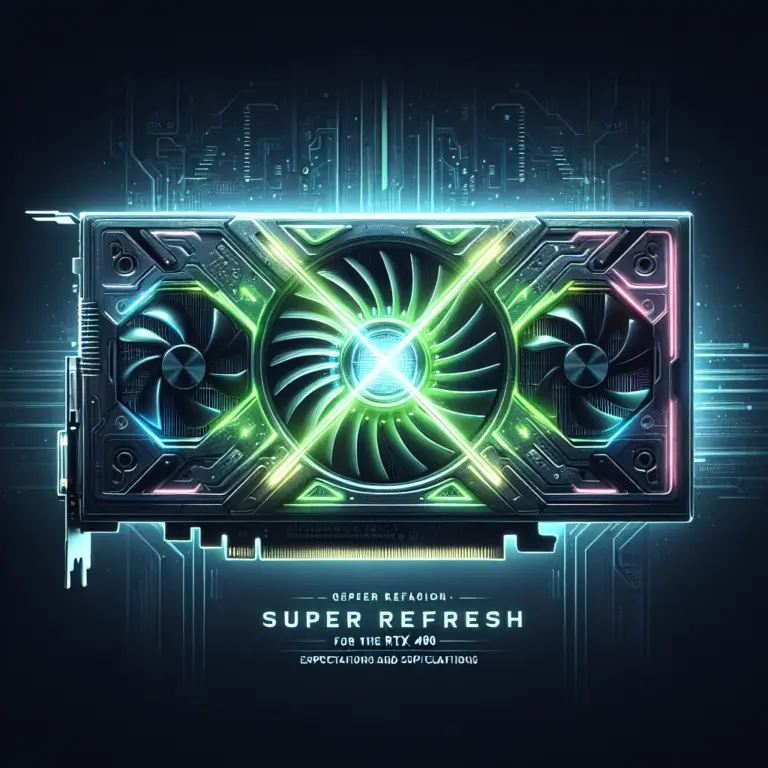Anticipation in the GPU Market: Rumors of Nvidia’s RTX 4080 Refresh
The GPU market thrives on anticipation, especially in the lull between major releases and the subsequent refresh seasons. This period is marked by a flurry of speculation, leaks, and rumors, all centered on what the next big thing will be. Currently, the buzz is all about Nvidia’s potential refresh of the RTX 4080, a powerhouse in the realm of graphics processing units. Enthusiasts and industry watchers are keenly observing every hint and whisper, trying to piece together the future of gaming graphics.
Amidst this speculation, the idea of a faster, more robust RTX 4080 Super model is gaining traction. Nvidia has a history of releasing such refreshed models, and the expectation is that this time will be no different. The gaming community is on the edge of their seats, waiting to see how Nvidia will enhance their already formidable GPU.

Historical Context of Nvidia’s Refresh Patterns
Nvidia’s strategy of refreshing their GPU lineup is a well-documented practice, with a consistent pattern observed over several generations of their graphics cards. This approach typically involves releasing a more powerful variant of an existing model, often with the “Super” or “Ti” moniker, several months after the original’s debut. The anticipation for the RTX 4080 Super follows this historical trend, with past releases providing a blueprint for what might be expected.
- GTX 1080 Ti – Released in March 2017, approximately ten months after the GTX 1080.
- RTX 2080 Super – Followed the RTX 2080 with a similar ten-month interval.
- RTX 3080 Ti – Came eight months after the RTX 3080.
These refreshes have not only offered incremental performance boosts but have also served to extend the lifespan of each GPU generation, keeping the product lineup fresh and competitive. With the RTX 3080 Ti and its predecessors setting a precedent, the potential release of an RTX 4080 Super is eagerly awaited by those looking to upgrade their gaming rigs with the latest Nvidia has to offer.
RTX 4080’s Market Performance and Comparison with RTX 4090
The RTX 4080 entered the market with high expectations but faced a challenging reception, primarily due to its pricing strategy. With an MSRP of $1,199, it was positioned uncomfortably close to the $1,599 RTX 4090, leading potential buyers to weigh the benefits of stretching their budget for the top-tier model. This pricing proximity raised questions about the value proposition of the RTX 4080, especially for those willing to invest in premium gaming hardware.
Performance-wise, the RTX 4080 and RTX 4090 are distinct, with the latter outpacing the former by a significant margin. Benchmarks have shown that the RTX 4090 is approximately 33% faster on average at 4K resolution, and even more so in specific gaming benchmarks. This gap underscores the potential for an RTX 4080 Super to bridge the performance chasm, offering a middle ground for consumers seeking better performance without the full leap to the RTX 4090’s price point.
Given these dynamics, the introduction of an RTX 4080 Super could recalibrate the market, providing a more compelling option for gamers and enthusiasts. The key will be striking a balance between performance gains and cost, ensuring that the refreshed model presents a clear advantage over the original RTX 4080 while remaining a financially attractive alternative to the RTX 4090.
Speculating the RTX 4080 Super’s Specifications
As the tech community speculates about the potential specifications of the RTX 4080 Super, several possibilities emerge. To achieve a significant performance boost over the existing RTX 4080, Nvidia may opt for various enhancements. These could include selecting the best-performing chips for higher clock speeds or utilizing a more capable GPU variant.
In previous refreshes, Nvidia has either employed the full version of the GPU used in the original model or a trimmed-down version from a higher tier. For the RTX 4080 Super, this could mean using a complete AD103 chip or a modified AD102. The latter, with its larger number of Streaming Multiprocessors (SMs), could provide the necessary uplift in performance.
| Specification | RTX 4080 Super (Speculated) |
|---|---|
| GPU Variant | Full AD103 or modified AD102 |
| SMs | 80-100 |
| Memory Bus | Wider than RTX 4080 |
| Memory Bandwidth | Potentially 768GB/s with fastest GDDR6X |
With the AD102’s larger size and more memory controllers, the RTX 4080 Super could also benefit from a wider memory bus, enhancing performance further. However, the physical size of the AD102 presents manufacturing challenges, potentially impacting availability and cost.
Ultimately, the RTX 4080 Super’s success will hinge on its ability to offer a meaningful performance increase over the RTX 4080, without encroaching too closely on the RTX 4090’s territory, both in terms of performance and price.
Potential Pricing and Value Proposition of the RTX 4080 Super
The pricing strategy for the anticipated RTX 4080 Super will be a critical factor in its market success. While it’s unlikely to be priced lower than the original RTX 4080, Nvidia might position the refresh at the same $1,199 MSRP. This approach could make the RTX 4080 Super a more attractive purchase, especially if it offers a performance boost of around 15% over its predecessor.
Considering the RTX 4090’s higher price point, a competitively priced RTX 4080 Super could entice those who are looking for better performance without the steep cost. The value proposition here lies in offering a GPU that is closer in speed to the RTX 4090 but remains significantly more affordable.
In terms of specifications, my personal prediction for the RTX 4080 Super includes:
- 88 SMs (11,264 shaders)
- 352 TMUs
- 128 ROPs
- A boost clock of 2,550 MHz
- A 320W power limit
- 16GB of VRAM on a 256-bit memory bus
This configuration would position the RTX 4080 Super as a formidable contender in the high-end GPU market, offering a substantial upgrade for gamers and professionals alike. As the release window approaches, the anticipation continues to build, with the community eager to see how Nvidia will shape the future of gaming graphics.












